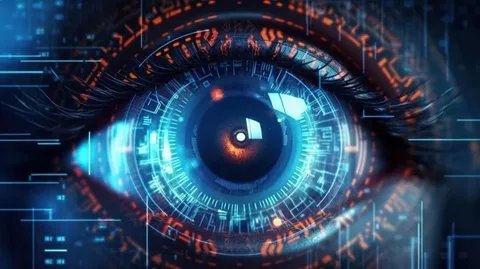
computer vision ai
Computer vision AI is becoming a major tool in modern manufacturing. It helps companies spot defects faster, more accurately, and without the need for human supervision 24/7. Whether you’re working in electronics, automotive, or textile production, surface defect detection can be automated using AI, and the results can be game-changing.
But how do you actually train a computer vision AI model to detect defects on surfaces? Let’s break down the steps in a simple, easy-to-follow way—even if you’re not a machine learning expert.
NOTE: If you plan to integrate automation into your quality control process, now is the time to begin. A well-trained computer vision AI can transform the way your production line operates—increasing accuracy and reducing effort.
Start with the Right Goal
Before you begin, ask one simple question: What type of defects do I want the AI to find?
Surface defects can be anything from scratches, dents, stains, cracks, to discoloration. Not all defects look the same, and not all of them affect product quality equally. So your training goal needs to be clear:
- Are you looking for visual flaws like dents or cracks?
- Do you need to identify color mismatches?
- Is it more about texture or material damage?
Being clear at this stage helps you choose the right images, tools, and methods later.
Gather Quality Images of Surfaces
This is where everything starts. A computer vision AI model needs lots of examples to learn what a “defect” looks like. This is done through images—sometimes thousands of them.
Here’s what you should keep in mind while collecting images:
- Use consistent lighting: Shadows or glare can confuse the AI.
- Cover all types of defects: Include images of different defect types, sizes, and shapes.
- Add clean samples: Your AI also needs to know what a perfect product looks like.
Many companies use industrial cameras placed over conveyor belts to capture real-time production line images. This gives them both good and bad samples at the same time.
Label the Defects in Your Images
Labeling is just marking the defects in each image so the AI can learn to spot them.
There are several ways to label:
- Bounding boxes: Draw a box around the defect area.
- Segmentation masks: Shade the exact shape of the defect.
- Classification tags: Tag the image as “defective” or “clean.”
Labeling is a slow but essential step. You can use free tools like LabelImg, CVAT, or Roboflow, or hire a small team to do the labeling.
Choose the Right AI Model
Many models out there work well for image tasks. A few common choices include:
- Convolutional Neural Networks (CNNs): Great for identifying visual patterns.
- YOLO (You Only Look Once): Good for real-time detection.
- ResNet or EfficientNet: Ideal when you have fewer images or need higher accuracy.
Don’t worry if these names sound technical. Most platforms offer pre-built versions of these models that can be trained with just your labeled images.

Train Your Computer Vision AI
Now that you have your images and a model, it’s time to train.
What happens during training?
- The model looks at each image.
- It attempts to identify the location of the defect.
- If it’s wrong, it learns from the mistake and tries again.
This cycle repeats thousands of times until the model gets very good at spotting defects on its own.
Training typically requires a decent graphics card (GPU) and some patience. But you can also use platforms like Google Colab, AWS SageMaker, or Azure ML if you don’t have your own setup.
Test the Model with New Data
Once trained, your computer vision AI needs a test. Feed it some new images it hasn’t seen before.
Check:
- How many defects did it catch?
- Did it miss any?
- Did it wrongly mark a clean area as a defect?
This step tells you if your model is ready to go live or if it needs more training.
If the model isn’t performing well, go back and check:
- Do you need more images?
- Were the labels accurate?
- Is the defect too subtle?
Often, small improvements in the training data make a big difference.
Deploy It to the Production Line
When your AI is ready, it’s time to put it to work. This usually involves:
- Installing the AI model on an edge device or server
- Connecting it to the camera feed
- Setting up a simple interface to view results or alerts
Now, your AI will scan every item in real-time, flag defects, and even reject faulty products from the line—without any human involvement.
Keep Improving the AI Over Time
Even after deployment, your computer vision AI needs care.
- Continue collecting images of new defect types
- Retrain the model every few weeks or months
- Monitor performance and tweak settings as needed
Over time, your AI becomes smarter, faster, and more useful—helping you reduce waste, improve quality, and save on labor costs.
Conclusion: Is Computer Vision AI Worth It for Surface Defect Detection?
Absolutely. Training a computer vision AI for surface defect detection is not just about cutting costs—it’s about raising the quality of your products while making your inspection process more accurate and consistent.
From image collection to labeling, model selection to deployment, the process is straightforward if you take it step by step. And the results can be powerful: faster detection, fewer returns, and better brand reputation.
Start building your AI inspection system today—because your products deserve perfect quality.
For more insightful articles related to this topic, feel free to visit blogpulsegu




